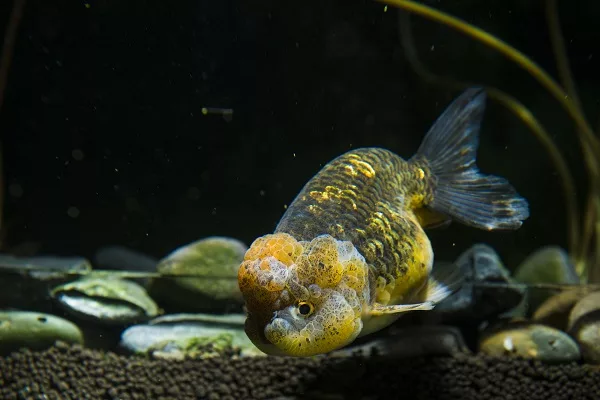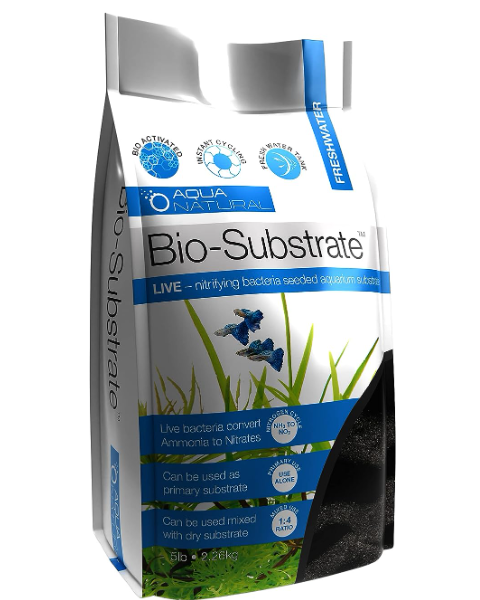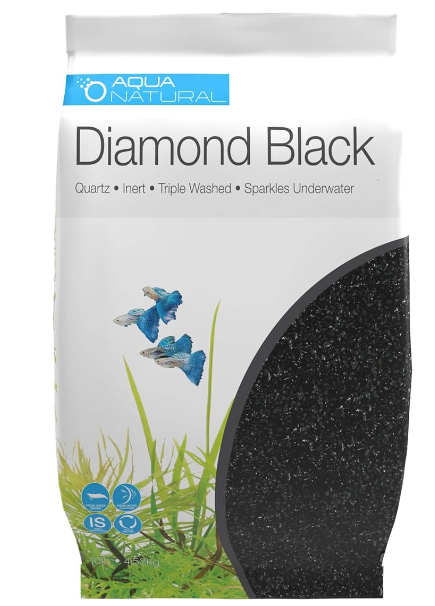
???? A Comprehensive Guide to Choosing the Best Substrate for Goldfish Tanks ????
Introduction: Best substrate for goldfish
Creating the perfect habitat for your goldfish involves many considerations, with substrate selection being one of the most crucial. The substrate not only adds to the aesthetic appeal of the tank but also plays a vital role in the overall health and well-being of your aquatic pets. In this comprehensive guide, we’ll delve into the world of goldfish substrates, exploring the various options available, their advantages and disadvantages, and offering recommendations tailored to different tank setups and goldfish types.
Types of Substrates for Goldfish: Best substrate for goldfish

A. Sand:
Sand is a popular choice among goldfish enthusiasts for its natural appearance and soft texture, reminiscent of the riverbeds where goldfish naturally forage. One of the primary advantages of sand is its gentle nature, which minimizes the risk of fin injuries, especially for delicate fancy goldfish varieties. Additionally, sand allows for natural foraging behaviors, promoting a more enriching environment for your goldfish.
However, sand does come with its challenges. It’s prone to compacting over time, leading to the formation of anaerobic pockets that can compromise water quality. Regular maintenance, such as stirring the sand during water changes, is necessary to prevent these issues. Moreover, caution must be exercised with certain goldfish types, as fancy varieties may accidentally ingest sand particles, leading to potential health problems such as blockages or impactions.
Despite these considerations, sand remains a popular substrate choice for many goldfish keepers, providing a visually appealing and enriching environment for their aquatic pets.

B. Gravel:
Gravel is another commonly used substrate in goldfish tanks, offering versatility in terms of colors and sizes to suit different aesthetic preferences. One of the key advantages of gravel is its stability, particularly for rooted plants in planted tanks. The porous nature of gravel also provides ample surface area for beneficial bacteria colonization, contributing to biological filtration within the tank.
However, gravel comes with its drawbacks. Its rough texture can be abrasive on delicate goldfish fins, potentially leading to injuries or irritation. Additionally, debris tends to accumulate between gravel particles, necessitating thorough cleaning to maintain water quality. When selecting gravel for a goldfish tank, it’s crucial to choose sizes that won’t pose a risk of ingestion or injury, especially for fancy goldfish varieties with flowing fins.
Despite its maintenance requirements, gravel remains a popular choice for goldfish tanks, offering both aesthetic appeal and functional benefits for planted setups.
C. Bare-bottom tank:
Opting for a bare-bottom tank, devoid of any substrate, offers a minimalist approach to goldfish keeping. This setup simplifies maintenance by eliminating the need to vacuum substrate during water changes and reduces the risk of substrate ingestion, particularly for goldfish prone to nibbling or swallowing substrate. Furthermore, a bare-bottom tank provides a blank canvas for creative aquascaping, allowing for the focal point to be on decorations and tank inhabitants rather than the substrate itself.
However, bare-bottom tanks also have their drawbacks. They lack the natural aesthetics of substrate-filled tanks and may not provide adequate substrate for beneficial bacteria colonization, necessitating alternative methods of biological filtration, such as external filters or frequent water changes. Additionally, some goldfish may exhibit signs of stress in a bare-bottom environment, as they’re accustomed to foraging and interacting with substrate in their natural habitat.
Ultimately, the decision to opt for a bare-bottom tank depends on personal preferences, tank setup, and the specific needs of your goldfish.
Factors to Consider When Choosing Substrate:
When selecting the most suitable substrate for your goldfish tank, several factors should be taken into consideration:
A. Goldfish species and breed:
- Different goldfish varieties have varying requirements and behaviors when it comes to substrate. For example, fancy goldfish with flowing fins may require softer substrates to prevent injuries, while common goldfish may be more resilient to rougher textures.
B. Tank setup:
- Consider whether your tank will be planted or non-planted, as this can influence the choice of substrate. For planted tanks, substrates with nutrients to support plant growth may be preferred, while bare-bottom tanks may be more suitable for non-planted setups.
C. Maintenance requirements:
- Evaluate the level of maintenance you’re willing to commit to. Some substrates may require more frequent cleaning and upkeep than others, depending on their texture and ability to trap debris.
D. Aesthetic preferences:
- Take into account your desired tank aesthetics and how different substrate options will complement the overall design and theme of your aquarium. Whether you prefer a naturalistic look with sand or a vibrant setup with colorful gravel, there’s a substrate option to suit every preference.
By considering these factors carefully, you can make an informed decision that meets the needs of both your goldfish and your personal preferences.
Addressing Common Questions and Concerns: Best substrate for goldfish
As goldfish enthusiasts embark on their journey to create the perfect habitat for their aquatic pets, several common questions and concerns may arise regarding substrate selection. Let’s address some of these queries:
A. Do goldfish need substrate?
- While goldfish can thrive in tanks without substrate, it’s essential to ensure adequate enrichment and habitat complexity through other means, such as decorations and hiding spots. Substrate can enhance the naturalistic feel of the tank and provide additional benefits, but it’s not a strict requirement for goldfish keeping.
B. Can goldfish have sand substrate? Best substrate for goldfish
- Yes, goldfish can have sand substrate, but precautions should be taken to prevent ingestion and compaction. Sand offers benefits such as mimicking natural habitats and facilitating natural behaviors, but it requires careful maintenance to avoid potential issues.
C. Is sand a good substrate for goldfish?
- Sand can be a suitable substrate for goldfish, especially for those prone to fin injuries or foraging behaviors. However, it’s essential to choose the right type of sand and implement proper maintenance practices to ensure the health and well-being of your goldfish.
D. What substrate is good for goldfish?
- The best substrate for goldfish depends on various factors, including fish species, tank setup, and personal preferences. Sand, gravel, and bare-bottom tanks are all viable options, each with its own advantages and disadvantages. Consider the specific needs of your goldfish and your desired tank aesthetics when making your selection.
E. Do goldfish need sand? Best substrate for goldfish
- Goldfish don’t necessarily require sand, but it can enhance their environment and provide enrichment, especially for species that naturally inhabit sandy bottoms. Whether you choose sand, gravel, or a bare-bottom setup, it’s essential to create a habitat that meets the needs of your goldfish and promotes their overall health and well-being.
By addressing these common questions and concerns, goldfish keepers can gain a better understanding of substrate options and make informed decisions when setting up their tanks.
Best Substrate Recommendations for Different Scenarios: Best substrate for goldfish
After considering the various factors and addressing common questions, let’s explore some recommended substrate options for different scenarios:
A. Best substrate for fancy goldfish: Best substrate for goldfish
- Fine sand or a bare-bottom tank is recommended to minimize the risk of substrate ingestion and fin injuries. Fancy goldfish varieties with flowing fins are particularly susceptible to injuries from rough substrates, so opting for a soft substrate can help prevent health problems.
B. Best substrate for common goldfish: Best substrate for goldfish
- Medium-sized gravel in natural colors is ideal for common goldfish, providing stability for rooted plants and a suitable substrate for beneficial bacteria colonization. The gravel should be smooth enough to avoid abrasions on goldfish fins but large enough to prevent ingestion.
C. Best substrate for large goldfish: Best substrate for goldfish
- A bare-bottom tank or large, smooth river rocks are recommended for large goldfish varieties, such as comets or koi. These substrates minimize the risk of substrate ingestion and accommodate the size and behavior of larger goldfish.
D. Best substrate for planted goldfish tank: Best substrate for goldfish
- Fine gravel or sand with root tabs is suitable for planted goldfish tanks, providing support for plant growth while ensuring compatibility with goldfish behaviors. Root tabs can supplement nutrient uptake for rooted plants, promoting healthy growth and vitality.
By selecting the appropriate substrate for your goldfish tank based on these recommendations, you can create a harmonious and thriving environment for your aquatic pets.
Conclusion: Best substrate for goldfish
In conclusion, choosing the best substrate for your goldfish tank requires careful consideration of various factors, including fish species, tank setup, maintenance requirements, and personal preferences. Whether you opt for sand, gravel, or a bare-bottom tank, it’s essential to create a habitat that meets the specific needs of your goldfish while enhancing the aesthetic appeal of your aquarium.
By understanding the advantages and disadvantages of different substrate options, addressing common questions and concerns, and considering recommended substrates for different scenarios, goldfish keepers can make informed decisions that contribute to the health and well-being of their aquatic pets.
Remember, the journey to creating the perfect goldfish habitat is a rewarding one, filled with opportunities for creativity and discovery. With the right substrate choice and proper care, you can provide your goldfish with a thriving environment that they’ll enjoy for years to come. ????
Addressing Common Questions and Concerns:
As goldfish enthusiasts embark on their journey to create the perfect habitat for their aquatic pets, several common questions and concerns may arise regarding substrate selection. Let’s address some of these queries:
A. Do goldfish need substrate?
- While goldfish can thrive in tanks without substrate, it’s essential to ensure adequate enrichment and habitat complexity through other means, such as decorations and hiding spots. Substrate can enhance the naturalistic feel of the tank and provide additional benefits, but it’s not a strict requirement for goldfish keeping.
B. Can goldfish have sand substrate?
- Yes, goldfish can have sand substrate, but precautions should be taken to prevent ingestion and compaction. Sand offers benefits such as mimicking natural habitats and facilitating natural behaviors, but it requires careful maintenance to avoid potential issues.
C. Is sand a good substrate for goldfish?
- Sand can be a suitable substrate for goldfish, especially for those prone to fin injuries or foraging behaviors. However, it’s essential to choose the right type of sand and implement proper maintenance practices to ensure the health and well-being of your goldfish.
D. What substrate is good for goldfish?
- The best substrate for goldfish depends on various factors, including fish species, tank setup, and personal preferences. Sand, gravel, and bare-bottom tanks are all viable options, each with its own advantages and disadvantages. Consider the specific needs of your goldfish and your desired tank aesthetics when making your selection.
E. Do goldfish need sand?
- Goldfish don’t necessarily require sand, but it can enhance their environment and provide enrichment, especially for species that naturally inhabit sandy bottoms. Whether you choose sand, gravel, or a bare-bottom setup, it’s essential to create a habitat that meets the needs of your goldfish and promotes their overall health and well-being.
Frequently Asked Questions:
In addition to addressing common concerns, let’s explore some frequently asked questions related to goldfish substrate:
What type of substrate is best for goldfish?
The best type of substrate for goldfish depends on various factors, including fish species, tank setup, and personal preferences. Sand, gravel, and bare-bottom tanks are all viable options, each with its own advantages and disadvantages. Consider the specific needs of your goldfish and your desired tank aesthetics when making your selection.
Which is better for goldfish, sand, or gravel?
Both sand and gravel can be suitable substrates for goldfish, depending on individual preferences and tank setup. Sand offers a natural appearance and soft texture but requires careful maintenance to prevent compaction. Gravel provides stability for rooted plants and beneficial bacteria colonization but may pose a risk of abrasion to delicate goldfish fins. Consider the pros and cons of each substrate type before making your decision.
What do you put at the bottom of a goldfish tank?
At the bottom of a goldfish tank, you can use substrate such as sand, gravel, or opt for a bare-bottom setup. The choice depends on factors such as fish species, tank setup, maintenance requirements, and aesthetic preferences. Ensure that the substrate chosen is suitable for goldfish and supports a healthy aquatic environment.
What is the best floor for a goldfish tank?
The best floor for a goldfish tank depends on various factors, including fish species, tank setup, and personal preferences. Options include sand, gravel, or a bare-bottom setup. Consider factors such as maintenance requirements, compatibility with tank decorations and plants, and the specific needs of your goldfish when selecting the best floor for your tank.
You may also like
- https://www.giobelkoicenter.com/koi-fish-meaning/
- https://www.giobelkoicenter.com/most-expensive-koi-fish/
- https://www.giobelkoicenter.com/matsuba-koi/
- https://www.giobelkoicenter.com/koi-egg-bound/
- https://www.giobelkoicenter.com/metronidazole-for-fish/